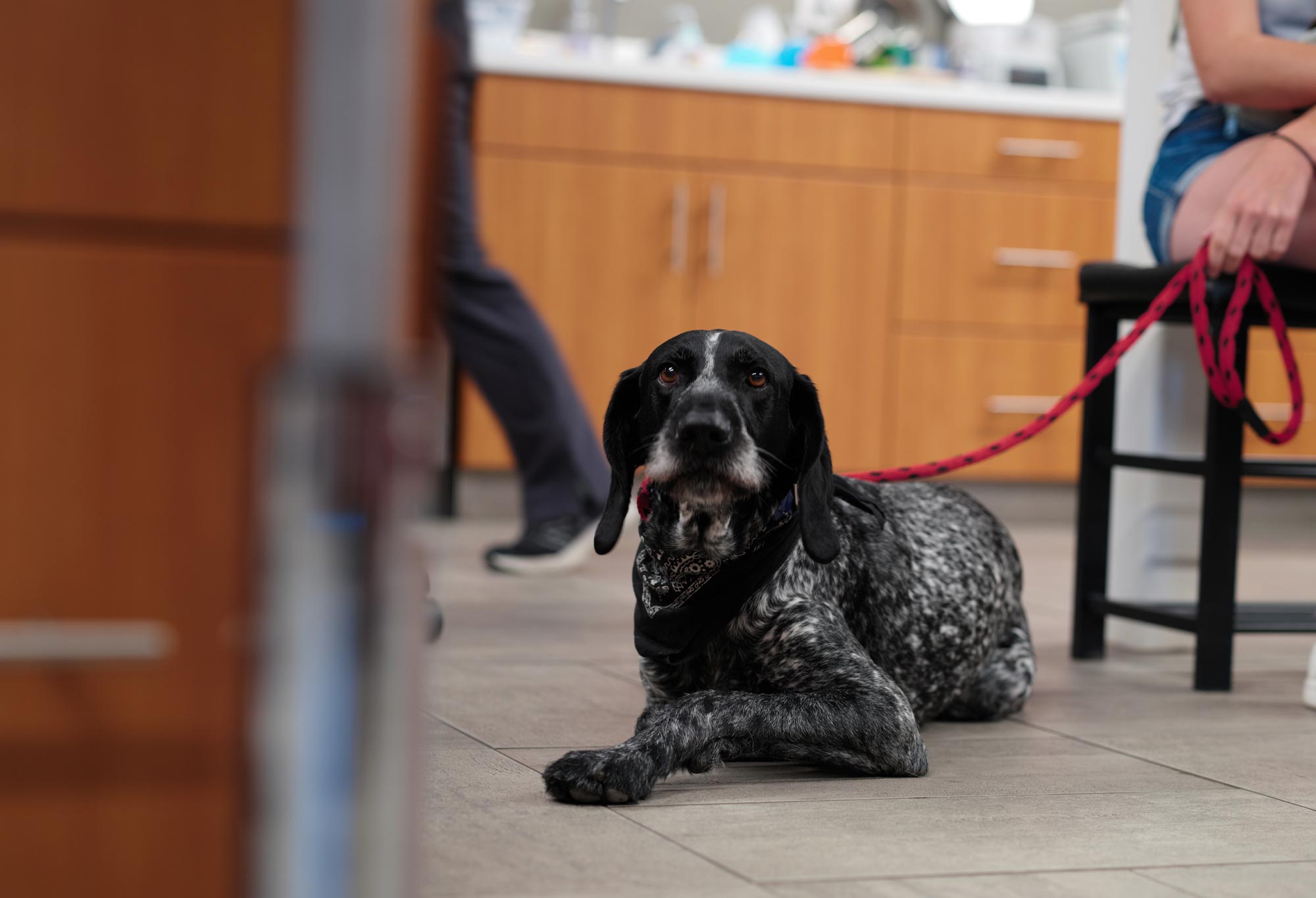
Dogs and Drowning – What Every Pet Owner Should Know
Dr. Casey Smallwood
Call & Speak with a doctor Open 24/7, Even Holidays!
Walk in today for:
Emergencies
Point-of-Care Ultrasound
Urgent Care
X-Rays
Diagnostics + Testing
End-of-Life Care
Surgery
Treatment + Hospitalization
In our veterinary emergency hospitals, we unfortunately see pets who experience near drowning. What pet parents don’t always realize is that some cases become fatal, as secondary symptoms develop. This article is filled with important information about water hazards for dogs, and what to do if your pet gets in over their head.
Most dogs instinctively know how to swim or “doggie paddle,” but they are still at risk around large bodies of water, especially swimming pools because the ways out are not always pet-friendly and they may not understand where they are. One way to avoid this, besides monitoring your dog around and in bodies of water, is teaching them where the pool exit (stairs, ramp, etc.) is so that they know where to head to avoid exhausting themselves and running the risk of a near drowning experience.
While near drowning can happen to any dog, some breeds, like brachycephalic dogs (bulldogs, pugs, Lhasa Apsos, Shih Tzus, etc.), are at an increased risk because of their narrow airways.
WHAT TO DO IF YOUR DOG IS FOUND IN WATER
Prognosis for survival from water submersion or near drowning can vary depending on if your pet was submerged and for how long. It’s not uncommon for pets that recover from near drowning to develop secondary complications so it’s always important to follow up immediately with a veterinarian and monitor your pet after the incident.
If your dog is found submerged underwater, get them out of the water and place them on a flat surface, away from the water. If your dog is breathing or awake, immediately call VEG. Be sure to tell us about the near drowning because most pets in this condition need oxygen support and VEG hospitals have oxygen cages ready for this type of situation. Our veterinarian will walk you through steps, which may include placing the dog on its side, elevating their top half, and extending the neck to try and prevent or drain fluid from collecting in the lungs before getting the pet to the ER.
PREP FOR THE ER
- Wrap the dog in a blanket to keep in body heat.
- Secure the water source so no other animals fall into it.
- Bring your dog to the ER immediately.
Even if your dog is able to be recovered and seems to be acting fine, you still need to bring them into an ER. In fact, all animals who are submerged, even for a few seconds, should go to the ER because fluid in the lungs can lead to difficulty breathing, bacterial infections, pneumonia, and other illnesses as well. There is also the risk of secondary drowning, aka dry drowning, a serious and sometimes life-threatening emergency.
TREATMENT FOR MINOR CASE OF A DOG’S NEAR DROWNING
In a case where your pet was underwater for a short time or if you aren’t sure if they had their head submerged underwater, you should ABSOLUTELY take your dog into the ER vet for evaluation. Depending on the initial triage and exam, you can likely expect your dog to be monitored overnight or for at least 6-8 hours. We’ll watch for secondary complications, like “dry drowning,” that can be delayed in their onset. We will monitor for breathing difficulty, heart rate, and check for any blue or purple discoloration of their gums indicating low blood oxygen saturation.
TREATMENT FOR SEVERE CASE OF A DOG’S NEAR DROWNING
We can’t mince words here: if a dog is found in critical condition or near death after a drowning or near drowning incident, the prognosis is typically quite poor. Likely, CPR or critical emergency measures would be used to stabilize your pet including: intubation (breathing tube), oxygen supplementation, initiation of CPR, and/or administration of medications to assist in breathing. Almost all these measures are going to take place within minutes of getting to the ER and likely done before any diagnostic testing, such as x-rays.
PREVENTION TO MINIMIZE RISK OF DROWNING
Whether your dog is allowed in the pool or just lounges poolside, nothing replaces constant supervision to ensure safety. In addition to supervision, you should:
- Train your dog to know where the stairs are. A dog trying to get out of the pool will look to the nearest section of the pool for a possible exit.
- A highly rated pool alarm or wearable pet water sensor can help alert you if your pet has fallen in.
- Set up a safety fence around the pool that has a pet-proof gate.
- Whether poolside, at the beach, or on a boat, a fitted life jacket is a good investment. It can keep your pet’s head above water until you help them out of the water.
- Sign your dog up for swim lessons to strengthen their natural instinct and skills.
CONTACT YOUR LOCAL VEG FOR ALL PET EMERGENCIES
Contact VEG if your pet needs emergency or urgent care. We have locations all over the country with emergency vets who are available 24/7 to help you and your pet. When you come to VEG, our emergency-trained team will triage your pet within seconds.

